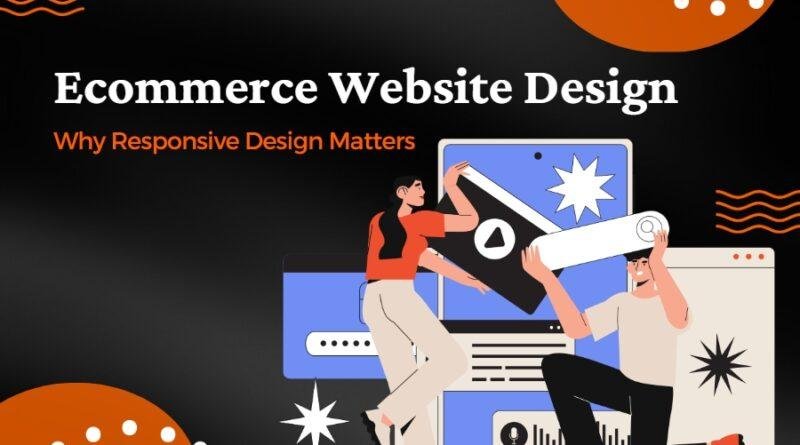Ecommerce Website Design: Why Responsive Design Matters
To reach customers online, businesses need an e-commerce website in today’s digital era. It is essential to have a website designed to provide an optimal user experience for all devices, including desktops, tablets, and smartphones. It is where responsive design comes into play.
This blog will explore responsive design and why it matters for e-commerce websites. We will also look at some best practices for designing a responsive ecommerce website development agency in Northampton.
Responsive Design: What is it?
Responsive websites adjust their layout according to the device on which they are viewed. It means the website will look and function differently on a desktop computer than on a mobile phone or tablet. Responsive design uses CSS (Cascading Style Sheets) to adjust the layout and content of the website based on the screen size.
Why Responsive Design Matters for E-commerce Websites
Mobile Usage is on the Rise
The number of people accessing the internet on their mobile devices is increasing yearly. In 2021, mobile devices accounted for 55.73% of global website traffic. If your e-commerce website is not optimised for mobile, you may miss out on many potential customers.
Improved User Experience
It means users will have a better experience browsing and shopping on your website. A positive user experience can lead to increased engagement, longer time on site, and higher conversion rates.
Better SEO
Google has stated that responsive design is their recommended approach to mobile optimization. This means that if your website is not mobile-friendly, it may be penalised in search engine rankings. By implementing responsive design, you can improve your website’s SEO and increase your chances of ranking higher in search results.
Cost-Effective
Designing and maintaining multiple versions of your website (desktop, tablet, mobile) can be costly and time-consuming. Responsive design allows you to create one website that works on all devices, saving you time and money in the long run.
Best Practices for Designing a Responsive Ecommerce Website
Mobile-First Design
When designing a responsive e-commerce website, starting with mobile devices in mind is important. This means designing for smaller screen sizes first and then scaling to larger devices. This approach ensures that the website is optimised for mobile and that the user experience is not compromised on smaller screens.
Simplify Navigation
Mobile screens have limited space, so it is important to simplify navigation and make it easy for users to find what they want. Use a hamburger menu to hide navigation links and use clear and concise wording for navigation links.
Optimise Images
Large images can slow your website’s load time, especially on mobile devices. Compress and reduce the size of images for the web without compromising their quality.
Use Responsive Typography
Make sure that the text on your website is legible on all devices. Use responsive typography that adjusts the font size, line height, and spacing based on the screen size.
Test, Test, Test
Testing is crucial when designing a responsive e-commerce website. Test the website on multiple devices and screen sizes to ensure it looks and functions as intended. Use tools like Google’s Mobile-Friendly Test to check if your website is mobile-friendly.
Read more helpful and informative blogs in just clicking.
Conclusion
responsive design is an essential component of ecommerce website design. It ensures that your website is optimized for all devices, improves user experience, and boosts your search engine rankings. By investing in responsive design, you can create a seamless shopping experience for your customers and increase your online sales. So, make sure to prioritize responsive design when designing or updating your ecommerce website.




